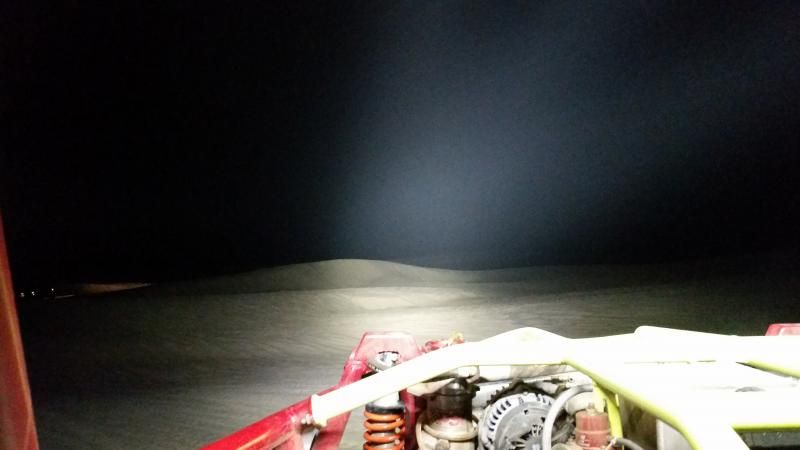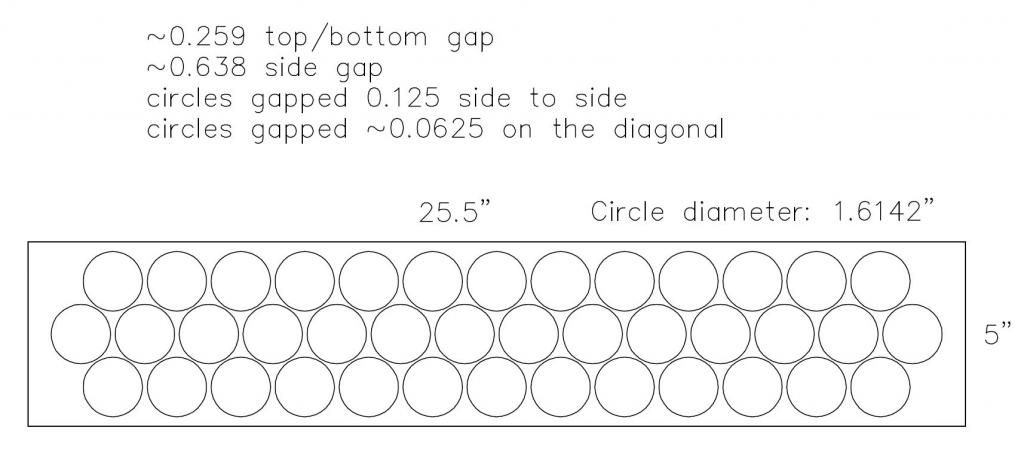I wont know what to expect until I have it up and running, then take several voltage measurements of each string at different temperatures (while wearing welding goggles). :bigsmile: The reef link illustrates what often happens in very meticulously built large arrays that operate in a static environment (which makes them even easier to vF balance). Its a long thread but worth the read. It doesnt take much to wind up with a string that hogs up most of the current.
While individual emitter vF might vary, the greater problem I foresee in this particular type of build is that a fully populated sink typically wont cool 100% evenly across the entire surface of the sink. Since I will be running 5 parallel strings of emitters per driver (4S5P) x 2, there is the potential for some strings to ultimately run at a higher temp, which would create a situation where they keep drawing more current and creating more heat in those locations (which will lower vF even more and cause them to draw even more current and create more heat). Im sure you already know this but thought Id mention it for others. The XM-L2 on copper should withstand a good amount of abuse in a worse case scenario (6A), but Id like to have even output from each emitter string, regardless of the sink temperature. They will be running above 3A each so it narrows the margin for error. After the emitters are in place, I’ll do my best to wire them in such a way that each string shares a symmetrical pattern on the sink from each group of 5 strings. I might interlace them with the other group of 5 from the second driver. Hopefully, that will create an even heat distribution pattern on the sink so they all share the same vF gradient as they heat up and cool down with the varying conditions. At that point, I can vF balance the strings if necessary and be done with it.
While I was trying to vF match my 50 emitters, I became frustrated at how quickly vF lowered directly after power was applied and also how small sink temp changes made a significant impact. After coming across the reef forum, I decided that the best way to test would be after all the emitters were wired to the actual sink and while operating in that environment.
After spewing all of that verbiage… maybe it doesnt matter at all. :bigsmile: Now wouldnt that be nice? But the reef posts indicate that it probably will matter.
Like you, I checked several other drivers and have a good many of them saved in my ebay favorites and other places. While a few of them claimed to be suitable for automotive applications, none of them made mention of voltage spike suppression or thermal management of the driver, or thermal monitoring to throttle power to the device it would be powering. The boost drivers are only rated at the higher amps when they boost only a few volts above vin… which nullifies their advantage for large arrays. Given the low cost differences to power ALL the emitters and the lack of support from the others (and how the Chinese often blatantly lie about their specs), it became clear that there is only one provider capable of delivering such a driver for an array of this size. On top of that, he’s a serious enthusiast that went through a great deal of time and growing pains in developing the driver to make it work as well as it does (check the cpf link in the first post). He also went far out of his way to answer all of my questions to educate me in how to best approach this. Im also engaging in a parallel build project for a landing light array in a custom show plane… so this must be reliable and not endanger the electrical system.
If you find other drivers, please post. Id love to find a cheap boost driver that could efficiently convert 14.5VDC to a stable 36-72VDC @3-4A, not overheat, be reliable, offer voltage spike suppression, driver thermal management and slaved thermal management.
I bought the sink from ebay but it was a one time deal. I prowl often, so If I find another one I’ll let you know.







